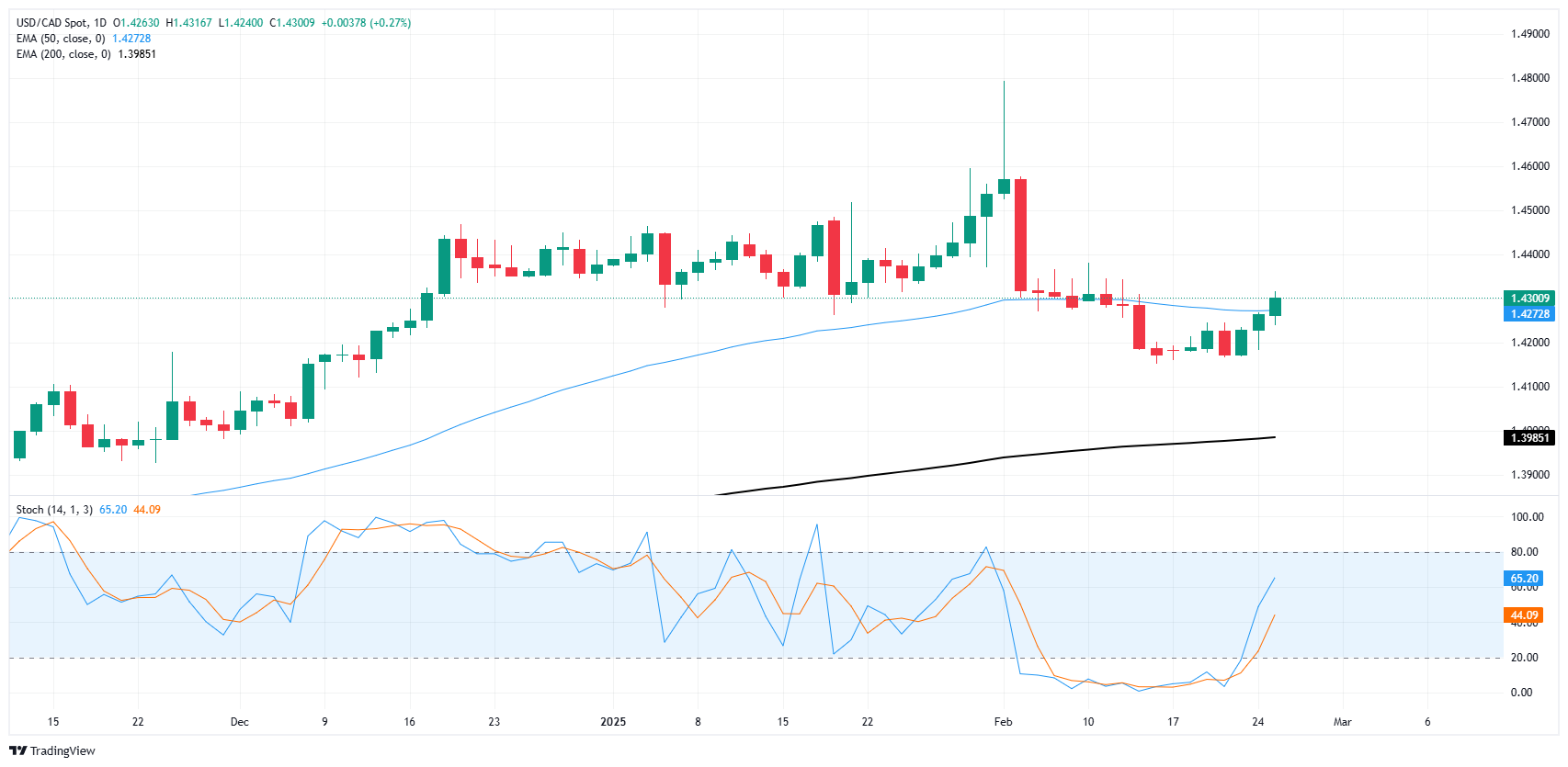เงื่อนไขและค่าสเปรดที่ดีที่สุดของเรา
 เกี่ยวกับแพลตฟอร์ม
เกี่ยวกับแพลตฟอร์ม
The Canadian Dollar (CAD) shed one-quarter of one percent against the US Dollar (USD) on Tuesday, bolstering USD/CAD and keeping the pair bid into the 1.4300 handle. The Loonie lost ground as broad-market investor sentiment takes a hit following worse-than-expected consumer sentiment surveys from the US, and renewed threats of steep tariffs on Canadian goods imported into the US is widening up the low side of the Loonie even further.
According to the US Consumer Board, consumer expectations hit a multi-year low in February, sparking renewed fears of an economic slowdown within the US economy. US President Donald Trump reiterated his threats to impose a package of 25% tariffs on all goods imported into the US from Canada and Mexico. Although most investors broadly believe President Trump will find an eleventh-hour excuse to kick his own tariffs down the road again, the prospect of the US embarking on a global trade war against all of its closest trading partners at the same time is knocking trader confidence lower.
The Canadian Dollar has lost ground against the Greenback for a third consecutive session on Tuesday, pushing USD/CAD back above the 50-day Exponential Moving Average (EMA) at 1.4272 and tapping the 1.4300 handle once again. The Loonie is testing back into familiar consolidation territory against the US Dollar, but a notable bullish lean in favor of USD/CAD will likely keep the Loonie under pressure as policy concerns continue to weigh.

The key factors driving the Canadian Dollar (CAD) are the level of interest rates set by the Bank of Canada (BoC), the price of Oil, Canada’s largest export, the health of its economy, inflation and the Trade Balance, which is the difference between the value of Canada’s exports versus its imports. Other factors include market sentiment – whether investors are taking on more risky assets (risk-on) or seeking safe-havens (risk-off) – with risk-on being CAD-positive. As its largest trading partner, the health of the US economy is also a key factor influencing the Canadian Dollar.
The Bank of Canada (BoC) has a significant influence on the Canadian Dollar by setting the level of interest rates that banks can lend to one another. This influences the level of interest rates for everyone. The main goal of the BoC is to maintain inflation at 1-3% by adjusting interest rates up or down. Relatively higher interest rates tend to be positive for the CAD. The Bank of Canada can also use quantitative easing and tightening to influence credit conditions, with the former CAD-negative and the latter CAD-positive.
The price of Oil is a key factor impacting the value of the Canadian Dollar. Petroleum is Canada’s biggest export, so Oil price tends to have an immediate impact on the CAD value. Generally, if Oil price rises CAD also goes up, as aggregate demand for the currency increases. The opposite is the case if the price of Oil falls. Higher Oil prices also tend to result in a greater likelihood of a positive Trade Balance, which is also supportive of the CAD.
While inflation had always traditionally been thought of as a negative factor for a currency since it lowers the value of money, the opposite has actually been the case in modern times with the relaxation of cross-border capital controls. Higher inflation tends to lead central banks to put up interest rates which attracts more capital inflows from global investors seeking a lucrative place to keep their money. This increases demand for the local currency, which in Canada’s case is the Canadian Dollar.
Macroeconomic data releases gauge the health of the economy and can have an impact on the Canadian Dollar. Indicators such as GDP, Manufacturing and Services PMIs, employment, and consumer sentiment surveys can all influence the direction of the CAD. A strong economy is good for the Canadian Dollar. Not only does it attract more foreign investment but it may encourage the Bank of Canada to put up interest rates, leading to a stronger currency. If economic data is weak, however, the CAD is likely to fall.